Of all the technology that can be applied to a dairy farm, a drafting gate must be one of the simplest and yet most important. From a time, safety and stress perspective, they are a brilliant investment, yet most of the farms I visit don’t have one. A good drafting gate doesn’t have to be automatic – it can be as simple as a spring-loaded gate that can be pulled as cows leave the parlour.
Brothers Michael and Tim Quigley from Nenagh, Co Tipperary, have had an automatic drafting gate for a number of years, but have recently upgraded the system and built a new yard for it. Their old drafting gate was an Alfco model, which was operated by a rope transponder placed on the cow’s tail.
It was working OK for a long time, but as numbers got bigger, the number of cows being drafted for AI was growing and it was becoming a bit of a bottleneck
The old drafter was positioned at the side of the parlour wall, so as cows exited, they turned to the right and then walked down by the side of the parlour, through the drafting gate and into the crush area.
“It was working OK for a long time, but as numbers got bigger, the number of cows being drafted for AI was growing and it was becoming a bit of a bottleneck, especially when cows were going back up the hill in front of the parlour,” Michael says.
The new development involved cutting out a section of the mass concrete wall directly in front of the milking parlour and building a new yard there. The brothers were able to do this as the dairy is to the side of the parlour and there was enough space in front of it before meeting a steep hill.
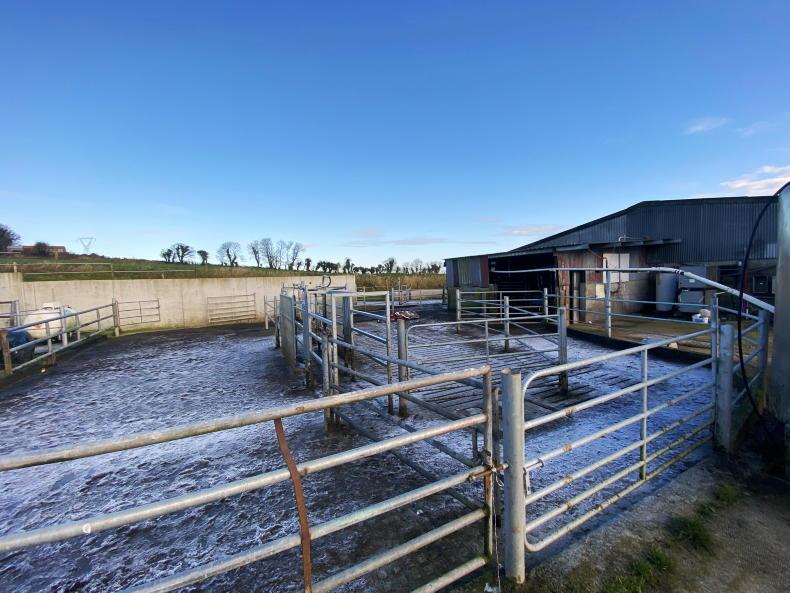
As cows leave the parlour they swing around to the left and then the passage turns to the right and cows walk through the drafting gate.
With limited space, they had to come up with a way of making the drafting gate fit, while at the same time maintaining good cow flow. The Quigley’s solution was to divert cows around to the left as they leave the parlour and then swing the passage around so that they walk through the drafting gate, which is at right angles to the parlour.
The holding pen nearest the parlour is slatted and there is a footbath at the exit of the other holding pen
The new three-way Alfco drafting gate can draft cows to the left, right or straight ahead. With 350 cows being milked, having sufficient space in the holding pens for 20 or 30 cows at any one time was important. The holding pen nearest the parlour is slatted and there is a footbath at the exit of the other holding pen.
“The three-way drafting is a great job and we use it the whole time, either for picking out lame cows to go through the footbath or when sorting cows on the run up to calving,” Michael says.

Cows from each of the holding pens and those not being drafted all exit the yard towards the crush area.
There are buttons to manually operate the gates at the top of the pit and Michael says that during the first three weeks of breeding, one of them will stand there and draft the cows with tailpaint missing as they exit the parlour.
It’s working fierce well
For the rest of the year, they use the keypad located at the top of the pit to pre-select which cows they want drafted.
“It’s working fierce well. We were a bit nervous at the start that cows might be slow to move through it because they could see other cows leaving the drafting gate, but that hasn’t been an issue at all,” Michael says.
The steel work around the drafting gate was welded together by Michael and Tim themselves. They say that if they were doing it again, they would have put a second slatted tank in to speed up cleaning the yard. Michael says it is essential to have a good grip on floors and slats, as most of the cows in the holding pens will be bulling and could get injured on slippery concrete. The cost of a new Alfco three-way drafting gate is €12,300 plus VAT, which is €1,500 more than the two-way model. A phone kit costs an extra €780.
Of all the technology that can be applied to a dairy farm, a drafting gate must be one of the simplest and yet most important. From a time, safety and stress perspective, they are a brilliant investment, yet most of the farms I visit don’t have one. A good drafting gate doesn’t have to be automatic – it can be as simple as a spring-loaded gate that can be pulled as cows leave the parlour.
Brothers Michael and Tim Quigley from Nenagh, Co Tipperary, have had an automatic drafting gate for a number of years, but have recently upgraded the system and built a new yard for it. Their old drafting gate was an Alfco model, which was operated by a rope transponder placed on the cow’s tail.
It was working OK for a long time, but as numbers got bigger, the number of cows being drafted for AI was growing and it was becoming a bit of a bottleneck
The old drafter was positioned at the side of the parlour wall, so as cows exited, they turned to the right and then walked down by the side of the parlour, through the drafting gate and into the crush area.
“It was working OK for a long time, but as numbers got bigger, the number of cows being drafted for AI was growing and it was becoming a bit of a bottleneck, especially when cows were going back up the hill in front of the parlour,” Michael says.
The new development involved cutting out a section of the mass concrete wall directly in front of the milking parlour and building a new yard there. The brothers were able to do this as the dairy is to the side of the parlour and there was enough space in front of it before meeting a steep hill.

As cows leave the parlour they swing around to the left and then the passage turns to the right and cows walk through the drafting gate.
With limited space, they had to come up with a way of making the drafting gate fit, while at the same time maintaining good cow flow. The Quigley’s solution was to divert cows around to the left as they leave the parlour and then swing the passage around so that they walk through the drafting gate, which is at right angles to the parlour.
The holding pen nearest the parlour is slatted and there is a footbath at the exit of the other holding pen
The new three-way Alfco drafting gate can draft cows to the left, right or straight ahead. With 350 cows being milked, having sufficient space in the holding pens for 20 or 30 cows at any one time was important. The holding pen nearest the parlour is slatted and there is a footbath at the exit of the other holding pen.
“The three-way drafting is a great job and we use it the whole time, either for picking out lame cows to go through the footbath or when sorting cows on the run up to calving,” Michael says.

Cows from each of the holding pens and those not being drafted all exit the yard towards the crush area.
There are buttons to manually operate the gates at the top of the pit and Michael says that during the first three weeks of breeding, one of them will stand there and draft the cows with tailpaint missing as they exit the parlour.
It’s working fierce well
For the rest of the year, they use the keypad located at the top of the pit to pre-select which cows they want drafted.
“It’s working fierce well. We were a bit nervous at the start that cows might be slow to move through it because they could see other cows leaving the drafting gate, but that hasn’t been an issue at all,” Michael says.
The steel work around the drafting gate was welded together by Michael and Tim themselves. They say that if they were doing it again, they would have put a second slatted tank in to speed up cleaning the yard. Michael says it is essential to have a good grip on floors and slats, as most of the cows in the holding pens will be bulling and could get injured on slippery concrete. The cost of a new Alfco three-way drafting gate is €12,300 plus VAT, which is €1,500 more than the two-way model. A phone kit costs an extra €780.






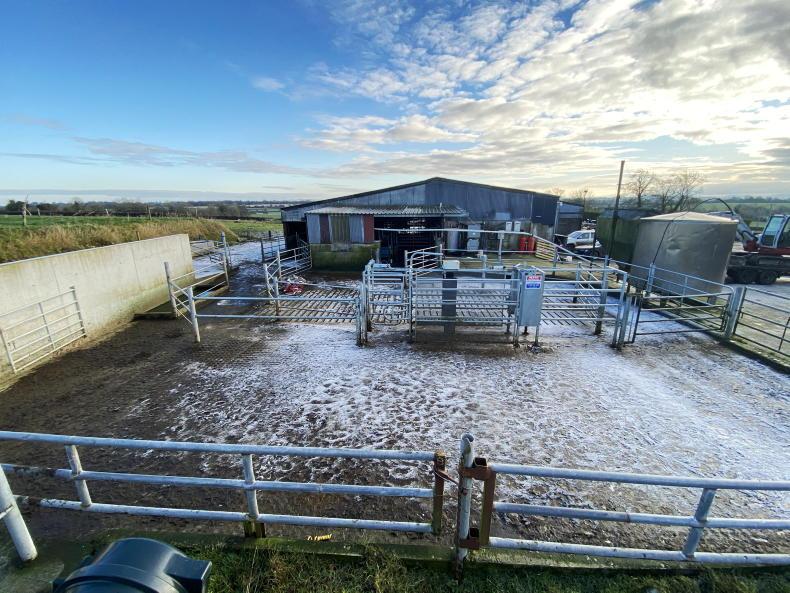
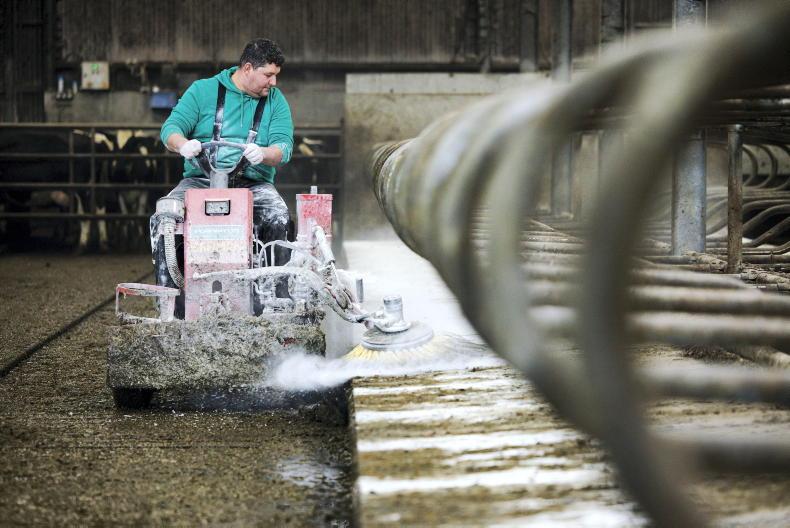

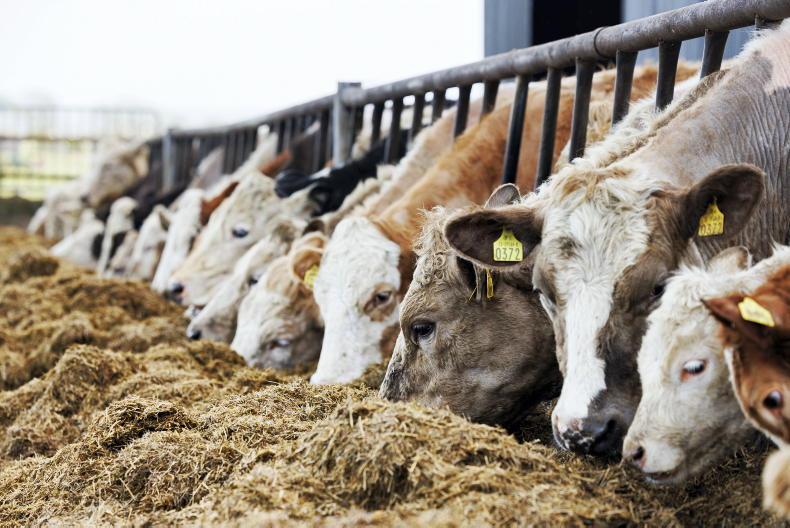
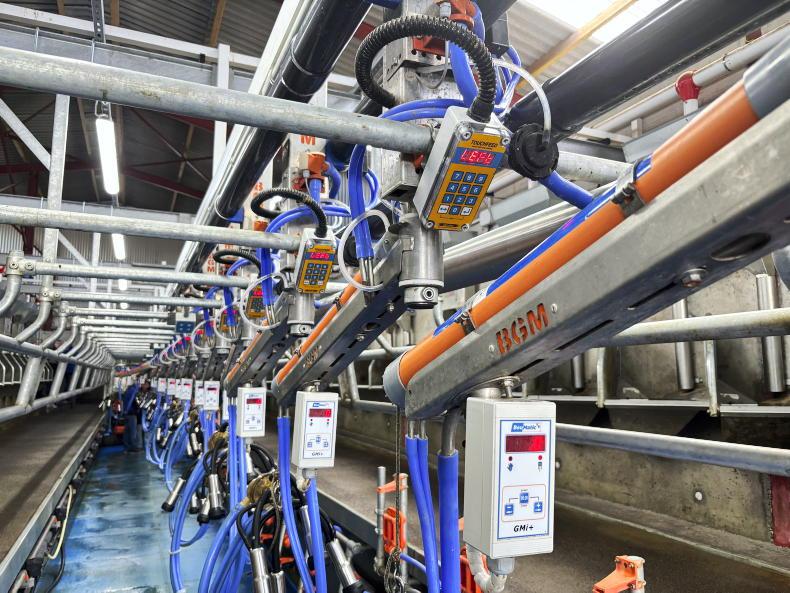
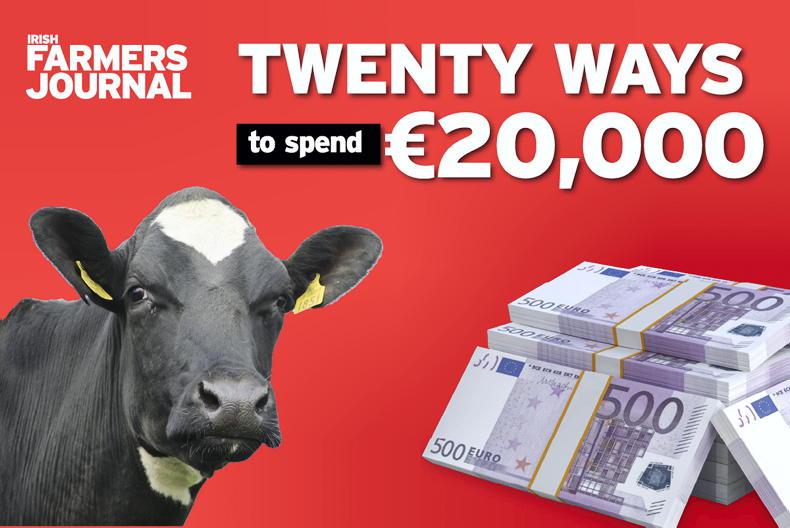
SHARING OPTIONS